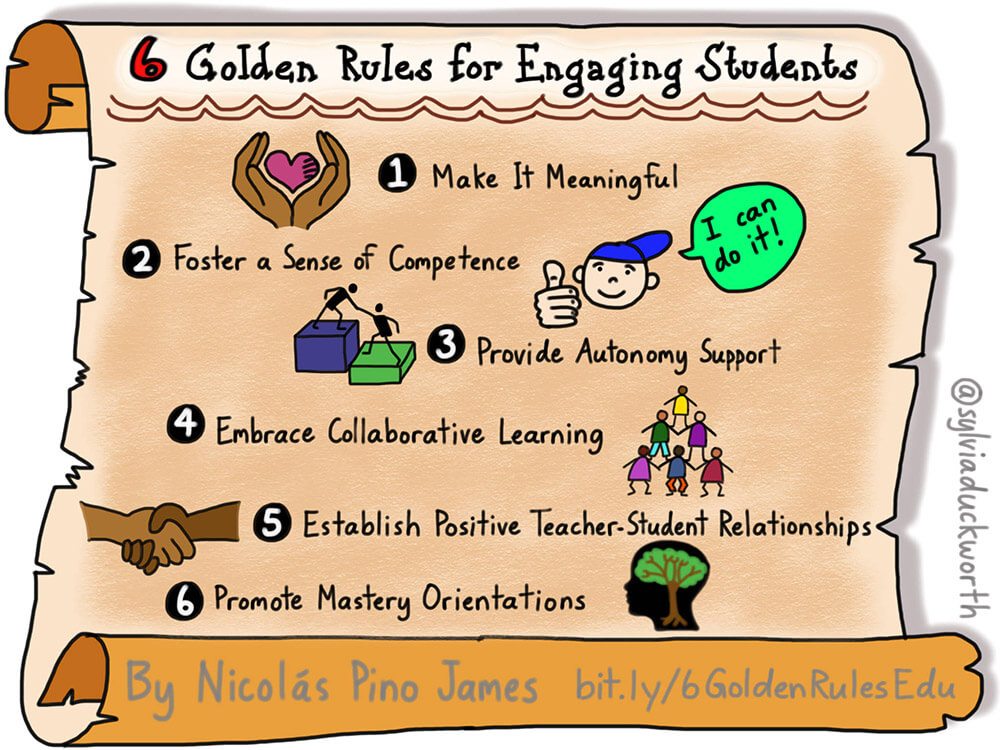
What Are The Golden Rules For Engaging Students?
by TeachThought Staff
If the mind of a student isn’t engaged, understanding and content mastery don’t stand a chance; if the mind and heart together aren’t engaged, long-term retention and transfer of understanding and content mastery are unlikely as well.
The accompanying graphic does a good job of representing both of these sides of ‘engagement.’ As she has become well-known, Sylvia Duckworth has taken a useful bit of content and made it even more useful with a little ink and color. In this case, she’s taken ‘6 Golden Rules For Engaging Students” by Nicolas Pino James and given it the Duckworth treatment. And the results are predictably positive.
Below is the graphic and we’ve added some strategies teachers might use to actualize the following rules for engaging students:
1. Make it meaningful
How? Let them brainstorm problems for problem-based learning. Involve the local community in project-based learning. Ask them what they love, are afraid of, are curious about, or want to contribute to.
2. Foster a sense of competence
How? Make progress visible (consider gamification). Make learning visible (here’s a post on how to get started).
3. Provide autonomy support
How? Encourage self-directed learning, but also provide checkpoints where students should check in with you, a peer, a parent, an expert in the community, or someone else who can support them without sacrificing their autonomy.
4. Embrace collaborative learning
How? Grouping is an easy go-to strategy here, but collaboration is more than simply sitting together, or completing an activity together. For true collaboration, design lessons and units that can’t function without meaningful collaboration–student-to-student, student-to-community, student-to-expert, school-to-school, and so on.
5. Establish positive teacher-student relationships
How? A good start toward building a positive teacher-student relationship is to meet the student on their own terms with authentic interest and personalized attention. Using positive presuppositions is another useful strategy.
6. Promote mastery orientations
If we’re truly focused on understanding (and its sibling ‘mastery’), then helping students understand what they’re working towards, the value of that goal, and how to recognize and use that mastery once achieved can help engage students, but also to promote a strong student-teacher relationship. In the long run, these two (engagement and relationships) eventually feed one another naturally.
6 Golden Rules For Engaging Students; image creation and attribution via flickr user syvliaduckworth